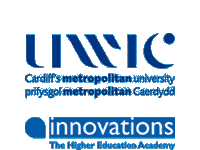
Kevin Byron
A View from the Outside
Download the video in iPod compatible mp4
Creative thinking aspires amongst other things to bridge discontinuities or gaps wherever they may be identified and in whatever form they may take. Two enduring discontinuities in terms of students' expectations in the education system in the UK are in the transition from secondary to higher education and from higher education to employment. In the latter as higher education aspires to deliberately nurture creativity in both teaching and learning as business and commerce have done in recent years, interesting opportunities arise for better matching the skills of graduates to the workplace. This could also be an opportunity for a broader dialogue between higher education and employers with creativity as the common ground.
The correlation between intelligence and creativity is a weak one and creative ability was traditionally assumed in students to enable them to make the best of their education. This assumption was also often made on taking up employment where exam results were the prime indicator for matching the person to the job. If creativity was nurtured in both instances it was either indirectly through project work or incidentally through personal motivation. However traces of the deliberate nurturing of creativity through the deployment of tools, techniques and problem-solving processes in the corporate, statutory and voluntary sectors can be identified as far back as the 1920's. Efforts in this endeavour were somewhat intensified from the 1950's when the term 'Brain-storming' was first coined by Alex Osborn and described in his book 'Applied Imagination.' Driven by accelerated change in the work-place, the last decade has seen an unprecedented growth in what could now be called the 'business of creativity' in these sectors.
Major international conferences in creativity take place annually in the USA, Canada, Europe and South Africa to cater to the growing needs of business, commerce, education and individual development. Many of the tools, techniques and methods demonstrated at these conferences could be invaluable in supporting the aims of higher education to place more emphasis on creativity and to help bridge the aforementioned gap from education to employment. To this end this presentation will aim to review some of the recent developments described in these creativity conferences from three continents.